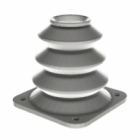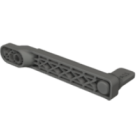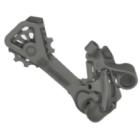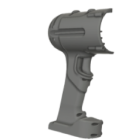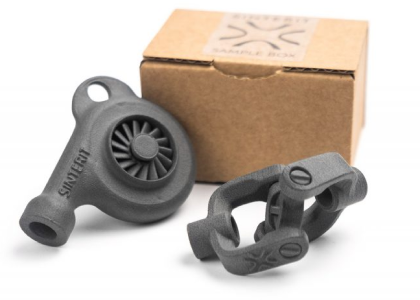3D automotive: additive manufacturing in car production
The role of additive manufacturing in the automotive sector has expanded dramatically in recent years. What began as a rapid prototyping tool has evolved into a robust solution for functional parts, tooling, and increasingly, low-volume production. The application of 3D printing in the automotive industry now spans the entire vehicle development cycle — from concept validation and lightweighting studies to final part fabrication and digital inventory for spare parts.
How 3D printing is used in automotive production
Within manufacturing environments, 3D printing is integrated alongside traditional methods — not as a replacement, but as a strategic complement. The use of 3D printing in automotive industry settings is driven by the need for faster iteration, cost-effective customization, and agility in the face of shifting consumer demands or supply chain disruption.
Automotive OEMs and Tier suppliers use additive manufacturing to produce jigs, fixtures, and assembly aids that are tailored to individual production lines. These printed tools can be optimized for ergonomics, reduced in weight, and delivered in a fraction of the time and cost of CNC-machined equivalents. In performance-focused segments — like motorsports or high-end EVs — AM is also used to produce aerodynamically optimized ducts, structural brackets, and integrated housings that benefit from weight reduction without sacrificing durability.
3D printing in automotive design and prototyping
One of the most valuable areas for additives is in 3D automotive design. Early in the development cycle, design teams use 3D printing to test complex geometries, validate packaging constraints, and explore component fit and aesthetics in physical form. Thanks to fast iteration and the ability to prototype directly from CAD data, this process accelerates decision-making and reduces the reliance on external tooling or mold production.
More importantly, additive enables functional testing at the design phase. Engineers can print prototypes with similar stiffness, thermal behavior, or mechanical strength to final parts, using high-performance materials like nylon PA12, carbon-fiber composites, or even metal alloys. This shifts testing upstream in the process, leading to shorter development cycles and better-informed design decisions.
Examples of 3D printed automotive parts
The list of 3D automotive products has grown well beyond simple housings or trim components. Depending on the technology and material used, both functional and aesthetic parts are viable candidates for 3D printing. Examples include:
- air ducting systems and intake manifolds,
- engine brackets and fluid routing channels,
- dashboard supports, HVAC connectors, and under-dash enclosures,
- custom badges, grilles, and interior accents,
- battery and electronic module enclosures in EVs,
- mounts and sensor housings for ADAS components,
- lightweight crash simulation components for testing.
In some cases, such as custom interiors or aftermarket modifications, 3D printing allows full personalization of vehicle features — something that traditional processes make prohibitively expensive.
Materials and technologies used in 3D automotive printing
Both polymers and metals are used in automotive 3D printing, depending on the application. Technologies such as SLS (Selective Laser Sintering) and MJF (Multi Jet Fusion) are commonly used for durable plastic parts that must withstand mechanical load and temperature fluctuations. FDM, with high-performance filaments like carbon-reinforced nylon or PEKK, is used for tooling and larger enclosures.
On the metal side, DMLS and SLM allow for aluminum, stainless steel, or titanium components — often used in powertrain testing, motorsport builds, or EV thermal systems. These technologies make it possible to consolidate parts, reduce welds, and improve thermal or weight characteristics without compromising function.
Why the automotive industry leads in 3D printing adoption
The automotive industry was one of the first to adopt additives at scale, thanks to its constant demand for faster development cycles, design flexibility, and localized production. The need to iterate quickly, test under real conditions, and produce parts in short runs — all without committing to full tooling — makes 3D printing especially well-suited to the sector.
Additionally, the shift toward electrification, connected vehicles, and lightweighting has only amplified the relevance of additives. New powertrain layouts, battery casings, and cooling systems demand bespoke geometries that traditional manufacturing can’t deliver cost-effectively at low volumes.
Summary: the impact of 3D printing on the automotive industry
The 3D automotive landscape is no longer limited to prototypes and design studies. Additive manufacturing is actively shaping how vehicles are developed, validated, and built — from production tooling and fit-check models to end-use brackets, enclosures, and even structural components. The application of 3D printing in the automotive industry is a clear example of how digital fabrication can support speed, innovation, and resilience in manufacturing. As vehicle architectures continue to evolve and consumer expectations shift toward customization and efficiency, 3D printing will remain a central enabler — not just in concept studios, but across production floors worldwide.
Explore also
- 3D printed prototype
- 3D printing in medical industry
- 3D printing for dental applications
- Application of 3D printing in industry
- Application of 3D printing in architecture
- Aerospace additive manufacturing
- 3D printing in civil engineering
- 3D printing in education
Related categories
 Austria
Austria  Bosnia and Herzegovina
Bosnia and Herzegovina  Bulgaria
Bulgaria  Croatia
Croatia  Czech Republic
Czech Republic  Denmark
Denmark  Estonia
Estonia  Finland
Finland  France
France  Germany
Germany  Greece
Greece  Hungary
Hungary  Ireland
Ireland  Italy
Italy  Latvia
Latvia  Lithuania
Lithuania  Poland
Poland  Portugal
Portugal  Romania
Romania  Slovakia
Slovakia  Slovenia
Slovenia  Spain
Spain  Sweden
Sweden  Switzerland
Switzerland  United Kingdom
United Kingdom  Ukraine
Ukraine  China
China  Hong Kong
Hong Kong  India
India  Israel
Israel  Japan
Japan  Malaysia
Malaysia  Philippines
Philippines  Saudi Arabia
Saudi Arabia  South Korea
South Korea  Taiwan
Taiwan  Thailand
Thailand  Turkey
Turkey  United Arab Emirates
United Arab Emirates  Egypt
Egypt  South Africa
South Africa  Tunisia
Tunisia  Canada
Canada  Mexico
Mexico  United States
United States  Brasil
Brasil  Colombia
Colombia  Australia
Australia  New Zealand
New Zealand 



